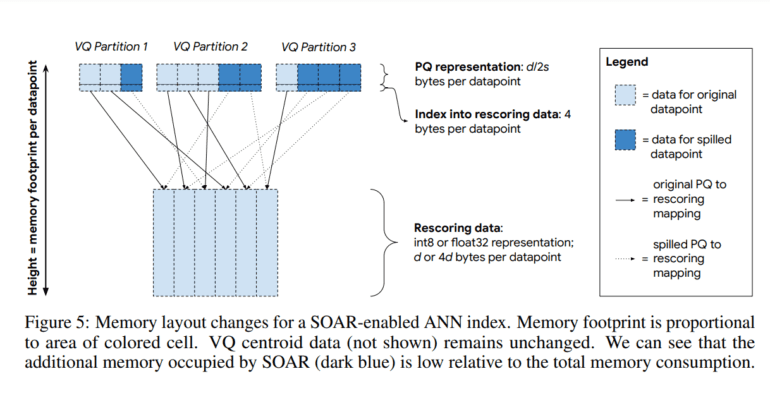- Google AI introduces SOAR, an algorithmic improvement to the ScaNN vector search library.
- SOAR enhances vector search efficiency by introducing redundancy through secondary assignments.
- The algorithm refines the loss function to optimize for independent and impactful redundancy.
- Experimental results demonstrate significant gains in search accuracy and computational efficiency.
- ScaNN with SOAR outperforms rival libraries in terms of querying throughputs across various benchmarks.
Main AI News:
Google AI has unveiled a groundbreaking enhancement to its vector search capabilities with the introduction of SOAR (Spilling with Orthogonality-Amplified Residuals). This algorithmic innovation, integrated into the ScaNN vector search library, marks a significant leap forward in the realm of efficient vector similarity search—a cornerstone of numerous machine learning algorithms.
In response to the escalating demands for scalability and performance in the face of ever-expanding datasets and evolving applications, Google AI researchers developed SOAR to accelerate vector search operations while simultaneously reducing computational overhead.
Traditionally, vector similarity calculation methods, including those utilized in ScaNN, relied on a clustering-based paradigm, where each vector in the dataset was assigned to a single k-means cluster. However, inherent limitations surfaced when query vectors exhibited high parallelism with the residual—a discrepancy between a vector and its assigned cluster center. This frequently led to missed nearest neighbors, particularly in cases where a query vector’s similarity to the cluster center failed to accurately reflect its similarity to individual vectors within the cluster.
SOAR revolutionizes this approach by introducing redundancy through secondary assignments, enabling vectors to be associated with multiple clusters. Moreover, it refines the loss function to optimize for independent and impactful redundancy, ensuring that secondary clusters contribute meaningfully to the search process.
The implementation of SOAR involves assigning vectors to multiple clusters and leveraging a modified loss function to promote orthogonal residuals. This innovative strategy significantly enhances search accuracy within a fixed computational framework or reduces the computational burden required to achieve equivalent levels of precision.
Experimental findings underscore the prowess of SOAR, affirming its ability to empower ScaNN with unparalleled advantages in terms of memory efficiency, indexing speed, and hardware compatibility. Notably, ScaNN equipped with SOAR exhibits querying throughputs several times higher than rival libraries with comparable indexing times, cementing its position as the preeminent choice for vector search performance across diverse benchmarks, including the ann-benchmarks glove-100 dataset and the Big-ANN 2023 benchmarks.
Conclusion:
The introduction of SOAR by Google AI marks a pivotal moment in the field of vector search, offering a potent combination of enhanced efficiency and minimal computational overhead. This innovation positions Google AI’s ScaNN library as the industry leader, poised to set new standards for vector search performance and redefine the landscape of machine learning algorithms. Companies operating in sectors reliant on efficient vector similarity search should take note of this advancement and consider integrating ScaNN with SOAR into their workflows to stay ahead of the competition.

